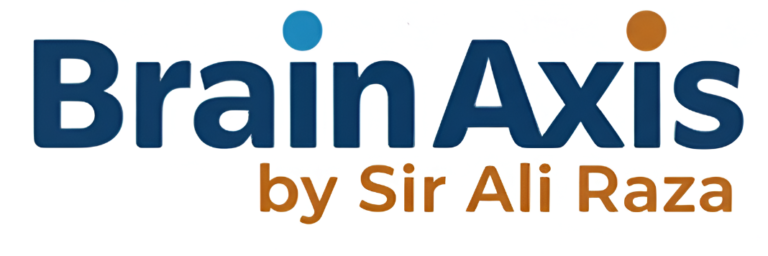Transition from Rome to the Middle Ages
- The Roman Empire gave stability to Southern Europe for nearly 900 years.
- From 376 AD it began to decline rapidly, and in 476 AD it finally collapsed.
- This collapse led to what historians once called the Dark Ages, a time seen as bleak and unstable.
- The fall of Rome marked the beginning of the Middle Ages, which lasted until the 1400s.
- In the fourteenth century, the Middle Ages gradually gave way to the Renaissance, a new era of ideas and cultural growth.
New Powers and Invasions
- Starting in the 700s, the Vikings, expert sailors and shipbuilders from Scandinavia, began to expand.
- Their flat-bottomed longboats allowed them to travel on rivers and attack towns inland, including Paris.
- Through raiding and trading, they extended their influence and settled in places like Greenland and parts of England.
Growth of Monarchies and Limits to Power
- Kings were powerful but not absolute rulers. They stood below the pope and ruled with the agreement of the people.
- William the Conqueror, the king of England, carried out a census and recorded it in the Domesday Book to track people and property.
- By the early 1200s, subjects led by clergy (people who are officially trained and authorized to perform religious duties in a church) began protesting against unfair taxes and treatment by the king.
- In 1215, the Magna Carta was signed. It gave rights to English people, including barons and merchants, to protect their property.
- The Magna Carta introduced the idea that the king was not above the law and had to follow it.
- This laid the foundation for law-making and debates in the centuries that followed.
The Parliamentary System and Rebellions
- In 1273, King Edward I set up the first Parliament at Westminster, where laws were discussed.
- Parliament developed into two houses: the House of Lords and the House of Commons.
- The king’s authority weakened as this system grew stronger.
- In 1381, peasants revolted against the king, proving that even common people could influence government.
- In 1649, the English Civil War broke out between supporters of the king’s absolute rule and supporters of Parliament.
- Parliament’s side won, reducing and controlling the power of kings.
Trade, Exchange, and the Silk Road
- The Silk Road was a major trade route connecting Asia and Europe, thriving especially under Mongol rule.
- It included both land and sea routes linking the continents.
- Goods like spices, silk, and carpets traveled west into Europe. In return, Europe sent wool, linen, and horses east.
- Along with goods, ideas and knowledge also spread between Asia and Europe.
The Black Death
- The same trade routes that spread goods also spread disease.
- The bubonic plague, or Black Death, likely began in the grasslands of Central Asia.
- It spread from rats to towns, and from there traveled on ships and with trade goods.
- By the 1330s, it had reached Europe through Italian ports such as Genoa and Venice.
- The plague killed around 45 million people, about one-third of Europe’s population.
The Renaissance
- The Renaissance began in the 1300s, bringing big changes to European society.
- Curiosity sparked by the Crusades and the Silk Road encouraged Europeans to explore and seek new knowledge.
- They drew inspiration from ancient Greek and Roman civilizations.
- Humanism emerged, focusing on the importance of the individual.
- This challenged the authority of the Church.
- The Renaissance became a period of creativity, discoveries, and new thinking in art, science, and religion.
The Islamic World and Knowledge
- Islam began in western Asia, in present-day Saudi Arabia.
- Before this, the region had been inhabited for centuries.
- In 610 AD, Prophet Hazrat Muhammad began to preach Islam, a faith in one God (Allah).
- His message united Arab people into one strong cultural and political nation.
- He also established the caliphate, a system of governance.
- Within a century, Islam had spread across North Africa, Spain, and as far as Afghanistan, led by rulers called caliphs.
- The expansion slowed twice: first in 1099 when Christian Crusaders took Jerusalem, and again in 1258 when the Mongols captured Baghdad.
- The Arab world became one of the most advanced and inventive civilizations of medieval times.
- Alongside China, it was the most learned culture of the era, focused on science, knowledge, and innovation.
- Europe’s interest in these fields developed much later, during the Renaissance.
The Ottoman Empire
- In 1299, Osman I, a Turkish leader, founded the Ottoman Empire.
- The empire expanded into Asia, Africa, and southern Europe, lasting nearly 400 years.
- Its rise was seen as a major threat to Christian Europe, since the Ottomans were Muslim and opposed the Crusaders.
- In 1453, the Ottomans captured Constantinople, cutting Europe off from major trade routes to Asia.
- The Ottomans were skilled horsemen and military experts, building a vast empire that stretched across North Africa, Egypt, Palestine, Mesopotamia, Greece, Albania, Romania, and Bulgaria.
- By the 1600s, their military power began to weaken, while Europe gained strength.
- New discoveries in the wider world gave Europeans fresh trade opportunities, reducing dependence on Ottoman routes.
- Over time, sections of the empire started ruling independently as the central government lost control.
- By the 1800s, the empire had declined greatly, though it still held parts of North Africa and Greece.
- After World War I, the empire ended, leaving only modern-day Turkey.
